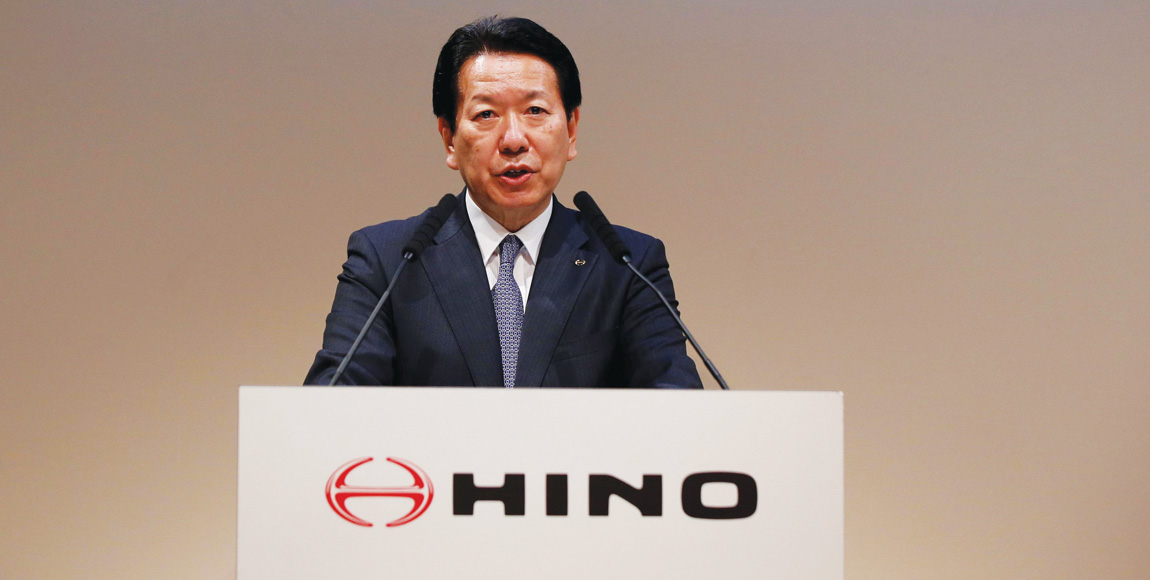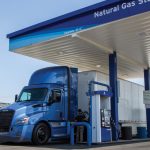Face to face with Hino’s Yoshio Shimo

Hino has announced a comprehensive plan to meet the objectives of its vision for 2025 and beyond. We went face to face with Yoshio Shimo, president and CEO of Hino Motors, to find out more
“Envisioning 2025” is driven by Hino’s corporate mission: “Making the world a better place in which to live by helping people and goods to get where they need to go”. How will you achieve this?
Today, human transportation and logistics are increasingly affected by social issues – including serious traffic accidents, CO₂ emissions and labour shortages. Hino is committed to helping solve these challenges by tackling them head-on with our own resources and working through partnerships and alliances to bring together a greater range of competencies.
We are working towards a world without traffic accidents, where transport is worry-free and safe; where the transport of people and goods does not tax the environment; and where people and goods can move freely and in an optimised manner.
How will you achieve these bold objectives?
First, we are developing, manufacturing and marketing best-fit products that incorporate leading-edge safety and environmental technologies. Second, we are providing total support that is customised for each vehicle operator. Third, we are developing new business activity areas.
Practically, how will it be implemented? Exactly what will customers be offered?
We are working on maximising vehicle uptime and minimising vehicle lifetime costs through Hino’s successful Total Support strategy. Actions in this regard include upgrading workshops and increasing the training of technicians to improve after-sales support. Providing optimal maintenance planning and just-in-time servicing are other strategies.
Where appropriate and beneficial, these developments will include the use of artificial intelligence and robot technologies. Along with our dealers, we are also developing solutions to enhance efficiency in transporting goods and people aimed at providing optimal operations with best-fit vehicles.
Speaking of your dealers, how will their role evolve in the future?
At present only 30 percent (525 000) of the 1,75-million Hino units in operation worldwide are serviced regularly by franchised dealerships. The aim is to grow this to 50 percent by 2025, with the number of units in operation expected to be in the region of 2,7-million at that time.
What are your exact objectives when it comes to vehicle sales?
We would like to grow our annual sales, from the 180 000 units sold in 2017, to 300 000 in 2025. The biggest sales increases are planned for the countries in the Association of Southeast Asian Nations (ASEAN), the Americas, China and “other” markets (Africa, the Middle East and Russia). We aim to grow volume in these markets from 28 000 to 52 000 units a year by 2025.
You have operations all over the world. What is their role within Hino?
Four centres are involved with developing new models: Japan, Thailand, United States (US) and China. Future production will be linked to markets with high demand. Thailand will be responsible for medium-duty trucks (500-Series), Indonesia will be the core production and export centre for light-duty trucks (300-Series) and China will be responsible for heavy-duty trucks (700-Series), while the US will develop dedicated vehicles for this specialised market. We would like to halve new product development lead time in these centres through the increased use of digital development.
Finally, what are your future product plans when it comes to the important areas of the environment and autonomy?
We are developing a growing number of diesel-electric hybrid models as well as full-electric vehicles, with the aim of reaching 100-percent electrification by 2050, in line with the Hino Environmental Challenge 2050.
We are also pursuing new areas of business innovation, which will include connectivity, autonomous vehicles, shared vehicles and strategic partnerships with logistics companies, fleet operators and public-sector organisations.
Published by
Focus on Transport
focusmagsa




